
"Kyrgyzstan! Wow! Where is that? Can you climb there?" Almost everyone asks me this when I start to tell the story of my last summer-holiday.
"Yes, you can!" Kyrgyzstan is the home of the Pamir-Alai mountains. There are many possibilities for wild mountaineering and rock climbing. Paul Sass and I had already planned to climb there one year ago, in summer 2016, but both of our family situations were not ideal because of our two small children.
This year the situation was much more relaxed for both of us and what's more, our team agreed to the challenge. Our very good friend Toni joined the group. Then I introduced the others to our fourth team member from the UK: Henry! I had to trust him with my life and promised he would fit in with the team. They wouldn't be disappointed in the end.
The team was in place. The constellation of climbers dictated our goal. This was the perfect team for an alpine rock climb first ascent:
- Paul, the knot and crack specialist from Elbsandstein.
- Toni, the strongest guy. If there were to be a hard section on the wall, he would go there alone with his jumar until that single metre would be climbed free.
- Henry, our British trad-specialist. If you can climb on British sea cliffs you can climb everywhere. [That's what I think!]
- and me: Benno. Three years ago I stayed in the UK and fell in love with British rock. At home I found some amazing big lines in the Karwendel.
In the western Alai Mountains lie three valleys with steep rock. The westernmost one leads to the famous mountain, Sabakh, but the walls are mostly north-facing. Then comes the Lajlak-valley, where the end is dammed by the big 1600m north-wall of Aksu, and the eastern Valley, which is the most famous: Karavshin.
We decided to opt for the middle one, the Lajlak-valley. Unlike Karavshin, it hasn't got a good reputation (until now!) for being a good free climbing destination. You can only read articles about hard Russian alpinists who climbed walls up to 1600m. They were suffering in thick jackets, climbing in aid style and staying on the wall for around a week.
Once we arrived we walked from one side of the valley to the other, always discussing where we should put up our new route. In the end our decision fell to a straight line on a mountain, simply called Pik 4800. It has a beautiful west-facing wall, which gets sun in the evening. It was unbelievable to get good climbing conditions on the wall, especially after a day of bad weather.
By now I had put up quite a lot of new multi-pitch-routes, but I totally underestimated what it means to climb at such a high altitude. Everything goes a bit slower and the weather is just that bit worse.
After ten days we had already reached halfway up the wall to an obvious bivvy ledge. From there Paul and I would attack the second part of the route to reach the summit in two days.
I didn't understand how Paul could climb in these conditions. The thermometer of his watch showed -3°C and a soft breeze of wind continued to tease us. After Paul climbed the eleventh pitch it was my turn. I just tried to think that everything feels normal. Not cold, just a little bit rough. But that was hard. I slipped into my climbing shoes with almost white-looking feet.
Feeling a bit oversized with five layers and a down jacket on top of it all, I started to climb. My toes felt like wooden boards and chalking up seemed pointless now, but it gave me a nice feeling of normality. Paul cheered me on and I got more and more used to the special conditions. We pushed ourselves and climbed further and further. As a prize for suffering in the morning, we got the evening sun later and on the second day on the wall, we finally reached the top. Now the route was there, we just had to free climb it.
The wall can be divided into two parts. The first part of the wall is compact. Only steep face climbing, where we placed bolts. The second part, after the bivvy ledge, is characterised by amazing cracks where you have to use a full rack.
Overall the 800m route Alexandra Supernova has 18 pitches from 6a to 7b. It is characterised by amazing rock quality, granite face climbing in the first half and beautiful steep crack climbing in the second part. Just notice the high altitude: The route starts from the glacier at 4000m and the peak is at 4800m.
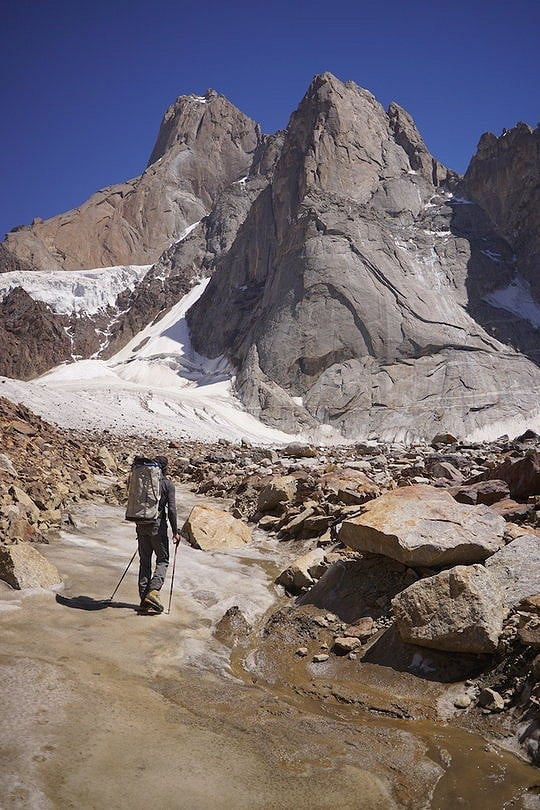
How to get there: You fly to Osh. The easiest way to get further is to book everything through a travel agency. They pick you up from the airport and bring you to the last village Ozgurush (1 day). Then they arrange a deal with the people from the village, who bring their horses up to the basecamp (1 day).
For anyone interested who would like to see more pictures, on 15th March 2018 there is a talk from Toni and Benno in Munich on the "Prater-Island". (Further information and topo soon at: Bennowagner.com)











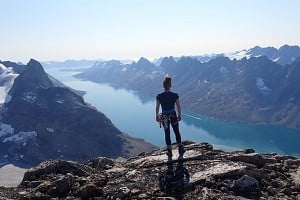
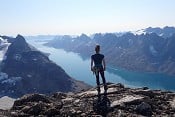
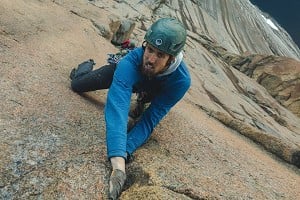
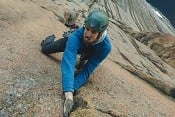








Comments